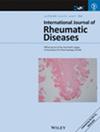Clinical Efficacy of Acupuncture Therapy Based on the Principles of Primary Point Selection, Local Point Selection, and Syndrome Differentiation in Rheumatoid Arthritis
Abstract
Objective
To evaluate the clinical efficacy of acupuncture treatment based on the principles of primary point selection, local point selection, and syndrome differentiation in patients with rheumatoid arthritis (RA).
Methods
RA patients recruited from the rheumatology department of our hospital between January 2022 and January 2024 were randomly assigned to either the sham acupuncture group or the acupuncture group. The sham group received medication combined with sham acupuncture, while the acupuncture group received medication combined with acupuncture based on the principles above. Comparisons were made on Traditional Chinese Medicine (TCM) syndrome scores, quality of life, clinical symptoms, and inflammatory status after 4 weeks of treatment.
Results
A total of 65 patients in the acupuncture group and 66 in the sham group were analyzed. The acupuncture group showed a substantially higher total effective rate than the sham group, underscoring a significant advantage in treatment efficacy (81.56% vs. 60.61%). After treatment, the reduction in TCM syndrome scores in the acupuncture group was greater by 1.16 compared to the sham group (95% CI: 0.21–2.12). Following treatment, both groups showed notable improvements, as shown by notable decreases in their Disease Activity Score for 28 joints and Health Assessment Questionnaire ratings. The acupuncture group reported significantly lower scores than the sham group (all p < 0.05). Additionally, rheumatoid factor, high-sensitivity C-reactive protein, and erythrocyte sedimentation rate levels were decreased in both groups. All of the results were statistically significant (all p < 0.05). However, the acupuncture group had significantly lower levels of these markers than the sham group. This suggests that acupuncture has a stronger therapeutic impact when treating illness.
Conclusion
Acupuncture treatment based on primary point selection, local point selection, and syndrome differentiation significantly alleviates clinical symptoms and inflammatory states in patients with RA, thereby improving quality of life.

 求助内容:
求助内容: 应助结果提醒方式:
应助结果提醒方式:


